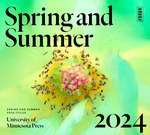II. Eden
I referred earlier to the inversion of the university press book sales from overwhelmingly library-driven three decades ago to overwhelmingly non-library driven today. Some have seen this as evidence of the university press mission as having moved away from that of the university – and scholarship – itself. Some have spoken of presses as turning away, like Eve and Adam leaving Paradise from the purity of monographs toward “midlist trade books,” but any look at university press catalogs quickly reveals that those “midlist” trade books are overwhelmingly written by university faculty – they are, in fact, scholarly books, some of the best that we publish. And there is nothing new in this at all. In 1928, three years after my Press’s founding, we published a book on healthy eating titled Prunes or Pancakes by the Dean of the School of Dentistry at Columbia University. A midlist trade title if there ever was one.
Nevertheless, Kathleen Fitzpatrick’s carefully argued and thought-provoking NYU Press book, Planned Obsolenscence: Publishing, Technology, and the Future of the Academy has traced an earlier model of university publishing from the 1893 founding of the University of California Press to publish works by that institution’s own faculty, mostly pamphlets which she sees as proto-blogs, noting that model prevailed for forty years until about 1930 – a decade we’ll recognize as that of the creation of the modern university press with the cooperative movement that would result in the formation of the AAUP. A widely-read library blogger extrapolated from Fitzpatrick’s account of the early decades of the UC Press that presses, he makes it sound greedy, even Satanic, “demanded autonomy to broaden their lists and retain their profits.”
Anyone who has worked for a university, not to mention a Press, would find comical this idea that a university press thus bullied its parent institution into submitting to its will. Too, this is the period most active for the founding of presses by universities and they were clearly started as publishing houses rather than the evolved university print shops of that earlier era Fitzpatrick documents – within eighteen months of the founding of my own Press in 1925, we had published books by faculty from California, Columbia, George Washington, Johns Hopkins, Northwestern, Smith, and Virginia.
But even more to the point, we should look at the context of this Edenic, prelapsarian university publishing of the 1890’s into the 1920s – a period at the beginning of which the entire body of Humanities and Social Science researchers at U.S. universities numbered fewer than 1000 men (for they were almost all men) and when most library collections were housed in departments, and managed by scholars, rather than centralized. Indeed, as the University of Chicago sociologist Andrew Abbott has found, the rise of the modern university press occurred at the same time as the professionalization of the university libraries and both in response to a dramatic, ten-fold expansion in research faculty between World War I and World War II. “This period,” Abbott writes, “produces the first clear evidence of a division between the scholars and the librarians” – note the division here – “ the scholars favoring specialized tools and departmental librarians, the librarians universalist tools and centralized libraries.” Abbott continues that “the emergence and consolidation of university presses in the 1910s and 1920s was essentially a response of universities to the overburdening of the earlier scholarly publication system.” Thus the birth – and, I would argue, the fate – of the modern university library and university press are intertwined in the professionalization of Higher Education management, with centralized libraries and university presses founded by growing Universities to solve, yes, a “crisis in scholarly publishing.”
So if there was a pre-Capitalist “gift economy” Eden when faculty managed their own publications and universities saw to publishing their own faculty, “tending to their own gardens,” rather than contributing to the global enterprise of scholarly publication, it was ended with a bite of the apple of professionalism by both libraries and presses – that is, in the modernization of publication, distribution, bibliography, collection, and preservation of knowledge. Returning to an however algorithmically-enhanced, institution-specific system modeled on that of pre-War America in our own time of increasingly networked scholarship and amid a complex, highly commercialized information ecology would involve a lot of devolution by both presses and libraries.


